The Ultimate Diet Guide – Understand Different Diets
Understanding diet and nutrition has been made more complicated and confusing than nuclear physics.
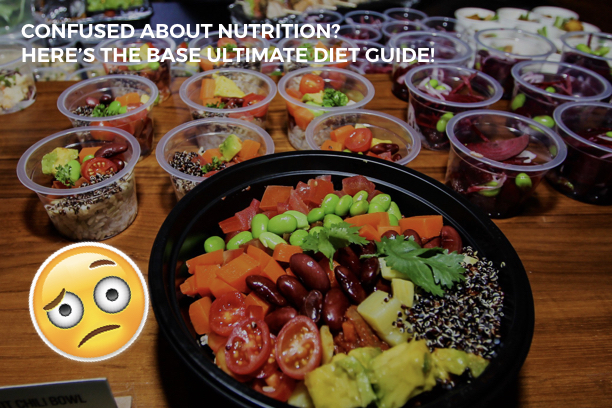
By Jack Thomas
Not a day goes by without a new study or article being released that tells us everything we thought we knew about diet and nutrtion is wrong (and probably dangerous).
Well, fear not! BASE is here to help you. Sort out the Paleo from the Keto with the ultimate guide to understanding the different diets. These are often talked about, but rarely fully understood.
What this diet guide is NOT
We’re not here to tell you what is ‘good’ or ‘bad’ for you. Just what the diets are. How they work and any relevant FACTS.
Ultimately, finding the right nutritional approach for you requires some patience and experimentation. As what works for me, may not work for you.
Our coaches at BASE can help you with this process if needed.
OK, let’s tuck in!
Low fat
The original diet that was championed by governments. For decades before a shift in policy, the low fat diet restricts the intake of dietary fat. The result is often a diet that is higher in carbohydrates and sugar.
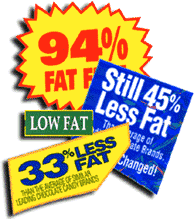
Low fat labels can be confusing
Low carb
This diet started gaining in popularity in the 90s and focuses on limiting your intake of carbohydrates (sugars, starches). This means a higher consumption of fat and protein.

Some low carb options
Atkins
A type of low carb diet, Atkins went viral before social media even existed. The big appeal was that food intake was not measured or restricted, as long as carbohydrates were very carefully controlled and limited. With the Atkins diet there are 4 phases, starting with very low carbohydrate intake that gradually increases and is adjusted over time.

First developed in the 60s, but shot to fame in 2003
Keto
Another low carb approach, a ketogenic (or ‘keto’ diet) involves consuming a very low amount of carbohydrates, so that the body is kickstarted into a state called ‘ketosis‘. When in ketosis, fats are broken down in the liver to produce ketones, which become our body’s primary fuel source over glucose.
With carb intake typically kept below 50g per day, a ketogenic diet needs to be very carefully controlled and monitored as the ketogenic state can be lost with the consumption of just a single carby snack.

A sciency – yet visually appealing – depiction of glucose vs ketones
Paleo
The Paleolithic (or ‘Paleo’) Diet is, at its essence, quite simple – only consume foods that could have been eaten 10,000 years or more ago.
Paleo-approved: Meat, fish, nuts, fruit, eggs, vegetables.
Paleo-disapproved: Dairy, soy, grains or processed food of any kind.
There is debate about what and how we ate during this period in our history, but it definitely wasn’t Doritos and KFC.
Our partner Paleo Robbie is recommended by BASE and delivers Paleo-approved food in Bangkok.
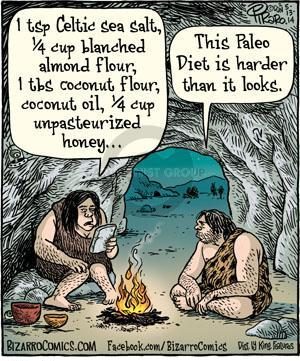
IIFYM (If It Fits Your Macros)
Macros refers to the macronutrients fat, protein and carbohydrates.
Also known as ‘flexible dieting’ If It Fits Your Macros is system of recording your food intake so that you hit certain protein, fat, carb and calorie amounts each day, tailored personally to you and your goals. This diet aims to promote more freedom with eating foods that you enjoy by allowing you to eat anything you want ‘if it fits your macro’ targets for that day.
For example, if I eat high protein foods in the daytime I would have enough fat and protein grams left in the evening to hit my totals with ice cream.
For more information check out the IIFYM website.
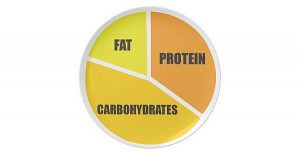
Consumption has to be carefully controlled and recorded with IIFYM
Intermittent Fasting
Often abbreviated to ‘IF’, intermittent fasting involves taking extended breaks from consuming calorie-containing food or drink. During this time you can typically consume black coffee, tea or anything that does not contain calories.
Numerous reports of IF’s benefits and lots of new and encouraging research on IF but the approach is not for everyone.
A popular method is 16:8 whereby you only consume foods during an 8-hour eating window each day, say, midday t0 8pm. Another is taking a 24-hour break from calorie consumption once a week.
Eat Stop Eat is our favourite resource for all things IF.
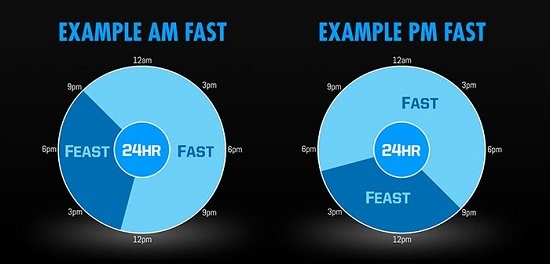
Two examples of an 16 hour fasting, 8 hour eating window
5:2 Diet
Often labelled as fasting but not technically so as still consuming some calories. However, the 5:2 diet involves eating restricted calories on two days per week – 500 for women, 600 for men – and a less restricted approach on the other five days of the week.
Shot to fame after a BBC documentary on the reported benefits which laid the seeds to many magazine articles and Christmas stocking books.

How a 5:2 diet split may look like
Vegetarian
There are different forms of the vegetarian diet; however, essentially it means eating a diet that does not contain animal meat or fish. Typically they allow dairy, eggs and other animal-derived products.
Vegan
As much a lifestyle and a philosophy as a ‘diet’, vegans will not consume any products or foods deriving from animals. This includes, of course, meat and fish and also covers eggs, dairy, leather and even honey. Furthermore, Vegans often follow their diet due to ethical and moral reasons, as well as health.
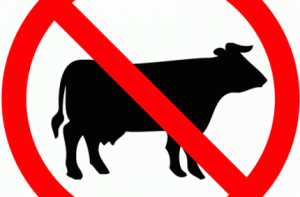
Summary
What is the best diet?
Simple – the one that works best for YOU!
Your body type, your schedule, your personal preferences and your lifestyle will all play a part in determining which way of eating works best.
At BASE we recommend you fully commit to the process of finding out what way of eating you can sustain forever which gives you energy, provides all the nutrients you need and keeps you at a healthy weight.
Have fun with this process and let us know how you’re getting on, or if we can help!
CHECK OUT: 3 BEST WAYS TO LOSE BODY FAT
Did you love this post and want to get some more? Subscribe today and get the latest posts, updates, and special offers from BASE.

